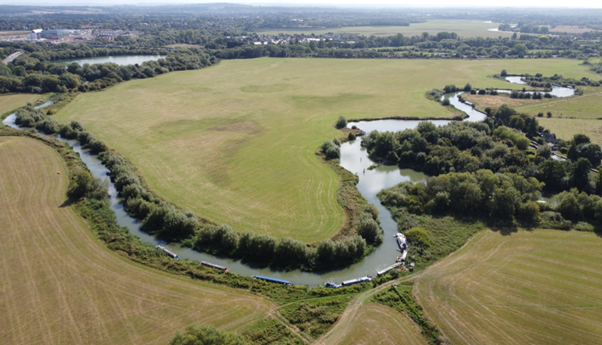Water quality at Wolvercote Mill Stream
We've been investigating the river water quality at Wolvercote Mill Stream, in Oxford. This is to understand our impact on the condition of the bathing water.
Wolvercote Mill Stream was the second inland river in the UK to get designated bathing water status. This means people can check the water quality data every week in the bathing season (May to September). The Environment Agency (EA) shares this information with the public.
At the end of the season, the water is graded based on how clean it's been over the past four years. Bathing waters can be classified as excellent, good, sufficient, or poor.
Background
In 2022, 2023 and 2024, the bathing water at Wolvercote Mill Stream was classified as poor. We've been working with the EA to better understand the causes of the elevated faecal bacteria – E. coli and Intestinal enterococci.
We've been assessing the impact of our assets on the water quality. Plus how future investment may support improving its classification.
We reviewed various data for several seasons thanks to a citizen science programme. But having early funding ahead of the next regulatory period allowed us to speed up investigations that would otherwise have taken place between 2025 and 2030.

Our investigation
We've investigated the water at Port Meadow and the catchment upstream of it. Our main initiatives included:
Water quality testing
Our sampling for faecal indicator organisms has been extensive. We’ve taken around 300 samples. In 2023, we checked five locations. This year, we expanded to 14 sites. We did extra sampling on smaller streams, with a focus on Dukes Cut and Kingsbridge Brook. We tested some points further up the Thames catchment, too. These smaller streams seemed to affect the bathing water the most.
Microbial source tracking
Some of the samples have also been used for microbial source tracking (MST). This technique uses microbial DNA to identify the origin of the faecal bacteria. This could come from human or wildlife species.
Bacteria modelling
We've been working with scientists from the UK Centre for Ecology and Hydrology. This is helping us understand how bacteria survive in the river under different conditions. And also to learn the likely rate of die-off once it’s left our treatment works. This could be in the treated final effluent or as storm overflow. Together we've replicated a river environment under lab conditions. We've also conducted experiments in the River Thames. This helped the development of a bacterial sub-model. It's based on the mathematical Questor river network water quality model.
Site walkovers
Site walkovers helped assess other local factors that may impact the water quality. These could be:
- Misconnected or blocked sewers or surface water pipes
- Agricultural or industrial inputs
- Private sewage systems not connected to the wastewater network
We also used drones to reach some more inaccessible areas.
What we learned so far
We’re still waiting to analyse the full data set before we draw any firm conclusions.
Next steps
Our business plan for 2025 - 2030 identifies a possible need to invest in UV disinfection at three treatment works. These are located upstream of Wolvercote Mill Stream. The investigations will help us understand how to develop these new schemes to achieve a sufficient classification of bathing water.
Our engineers are already working on the schemes' designs so that we can introduce any needed solutions as quickly as possible. However, this is subject to the outcome of our final determination from Ofwat.
We're also planning to meet new government targets for storm overflows within 5km of bathing waters. This includes improvements at the Cassington sewage treatment works.